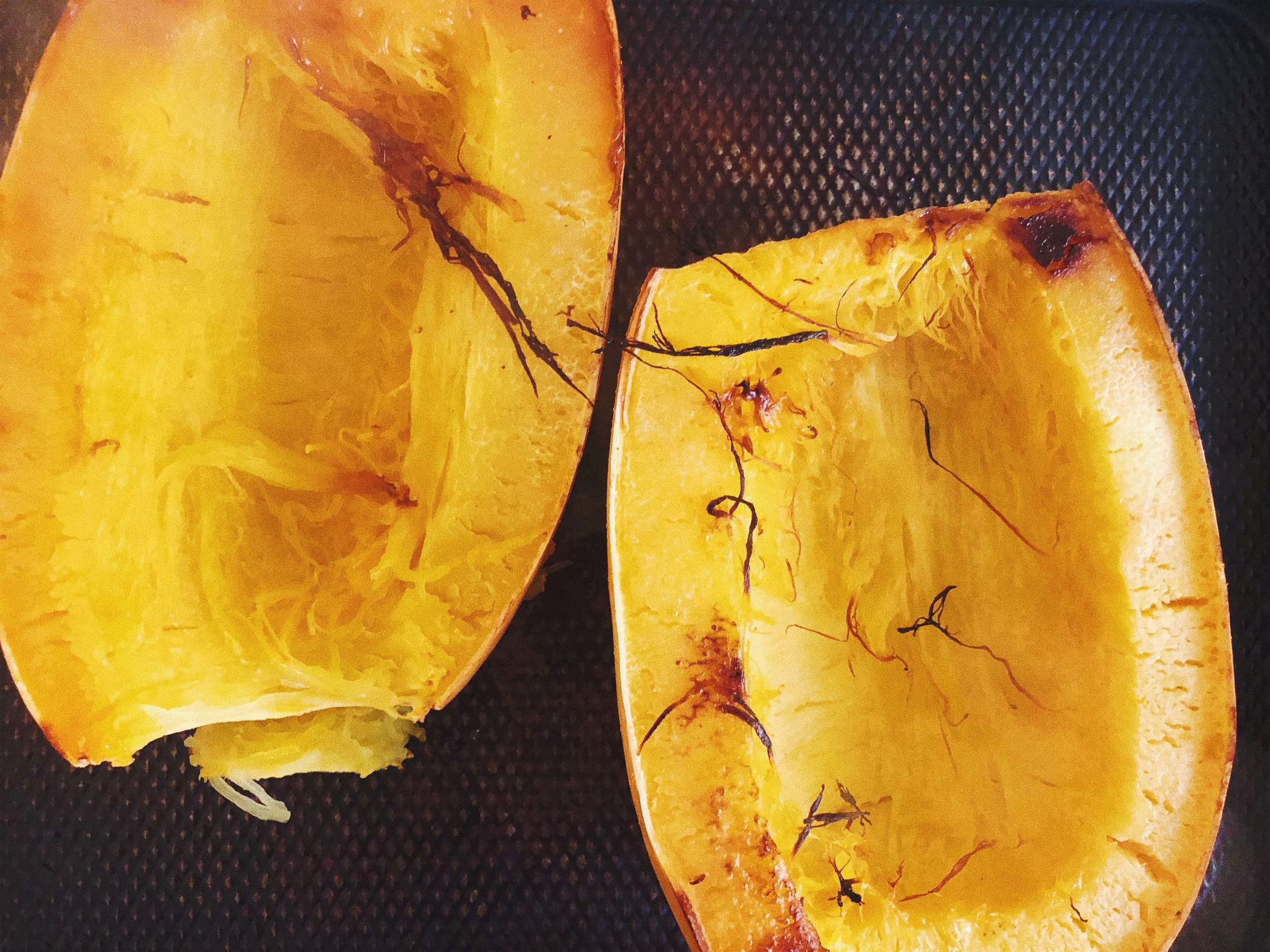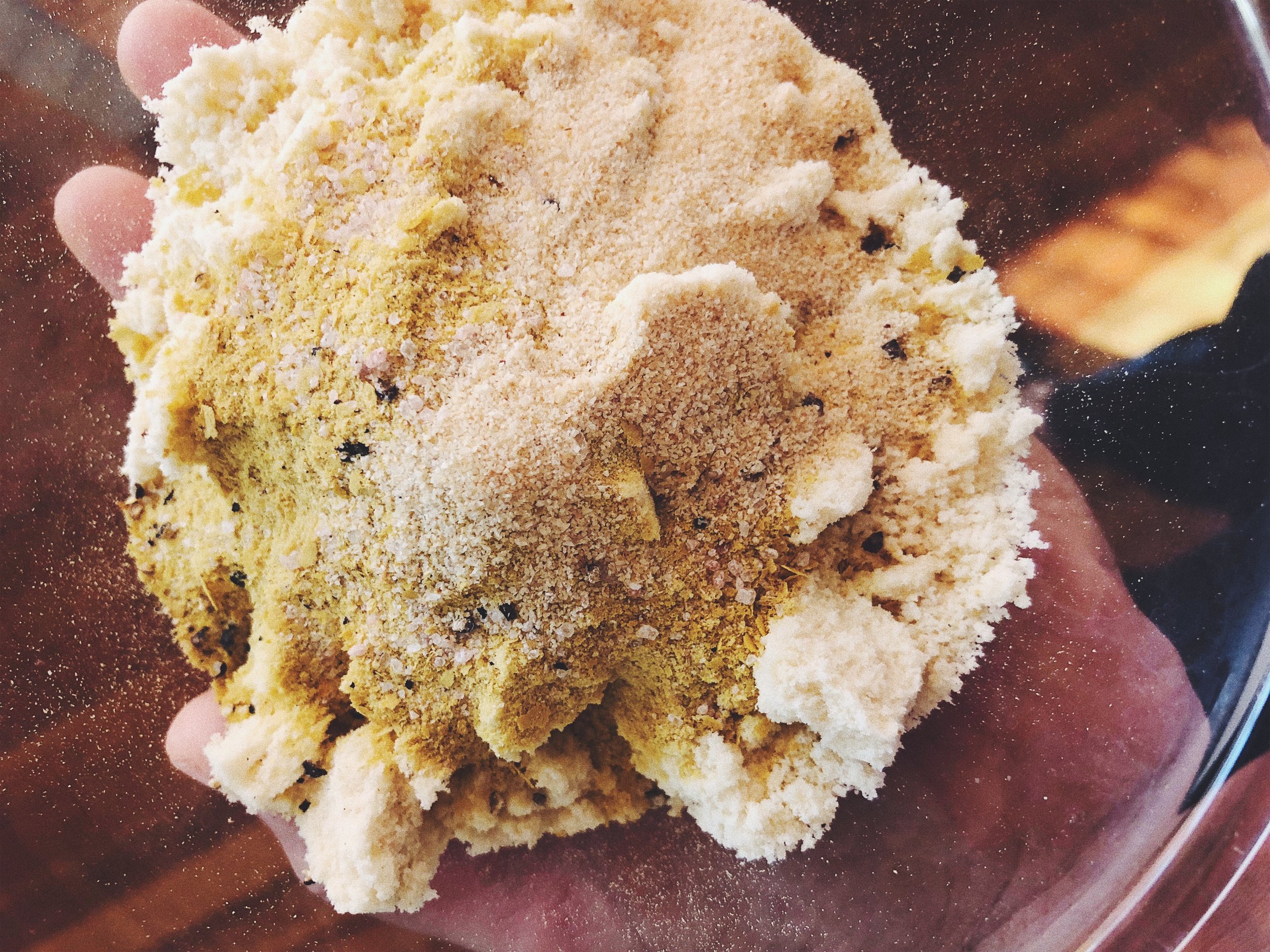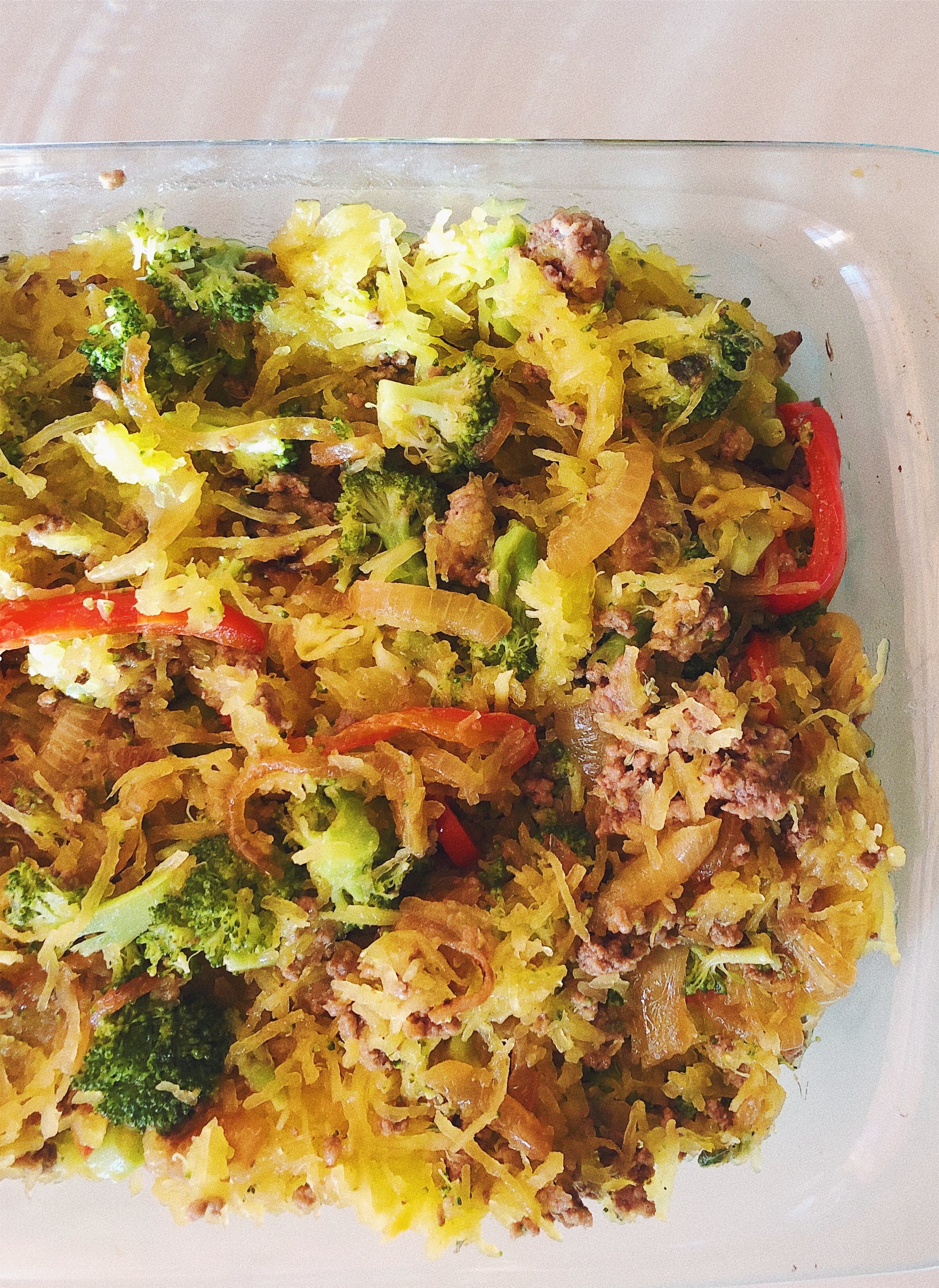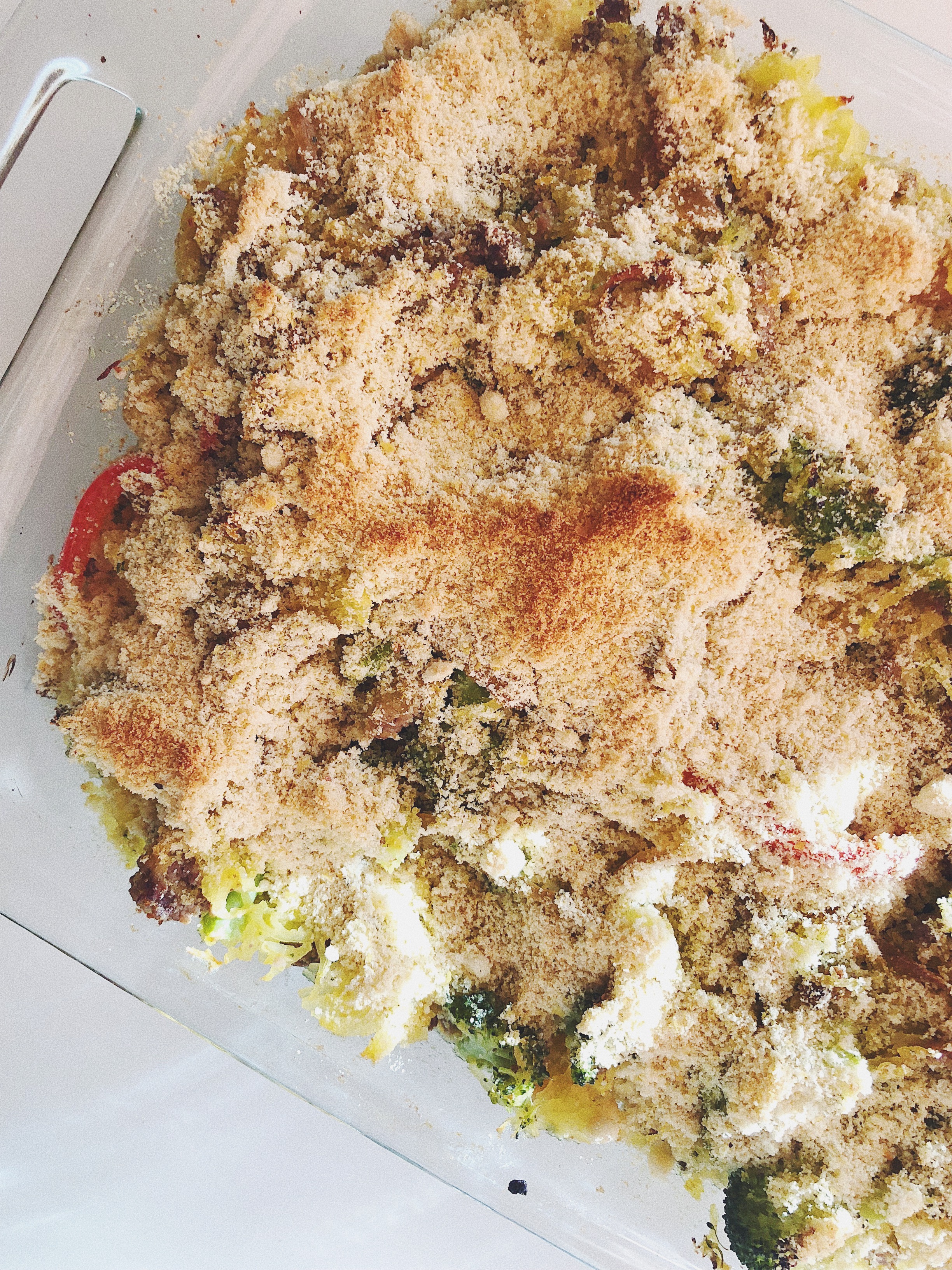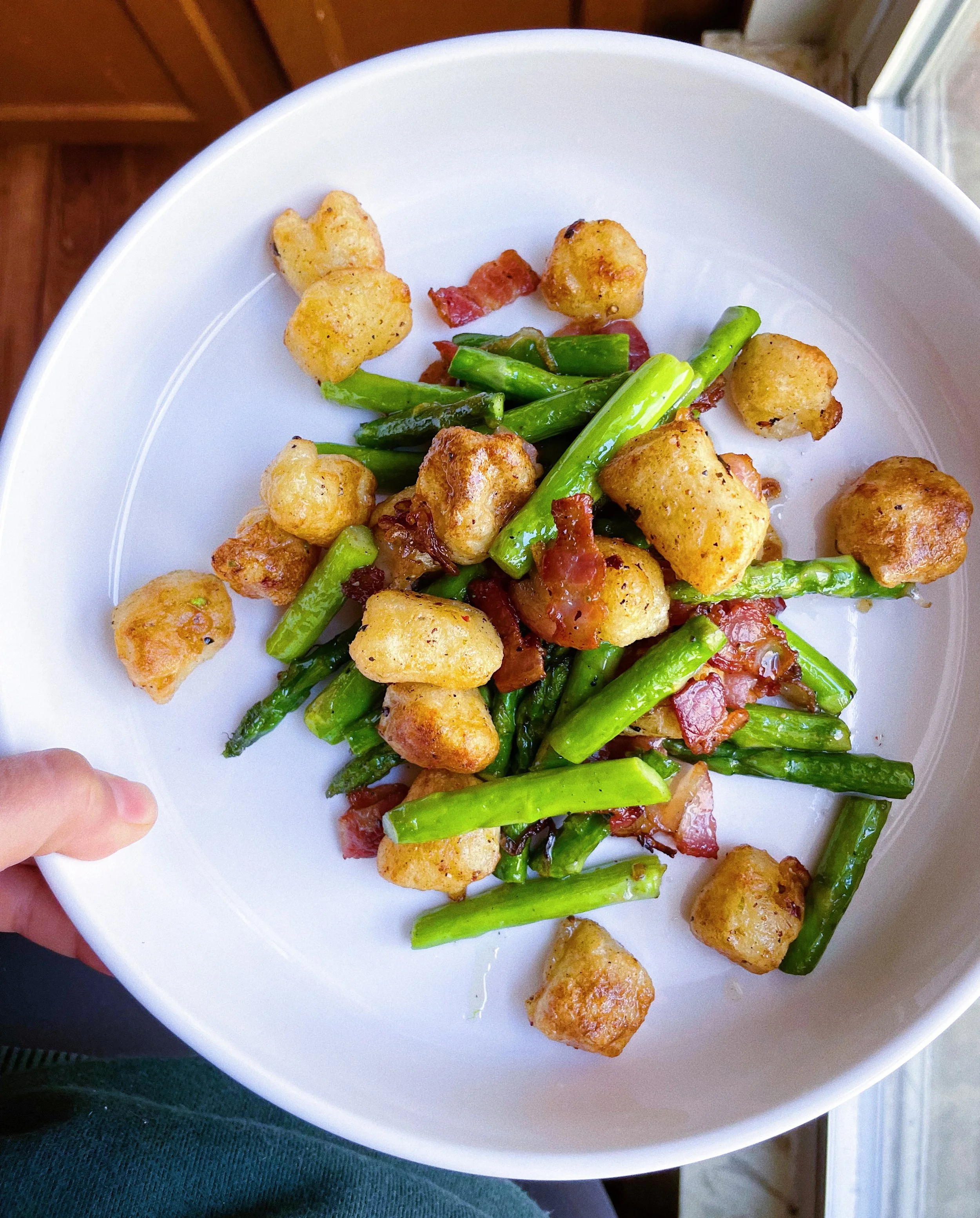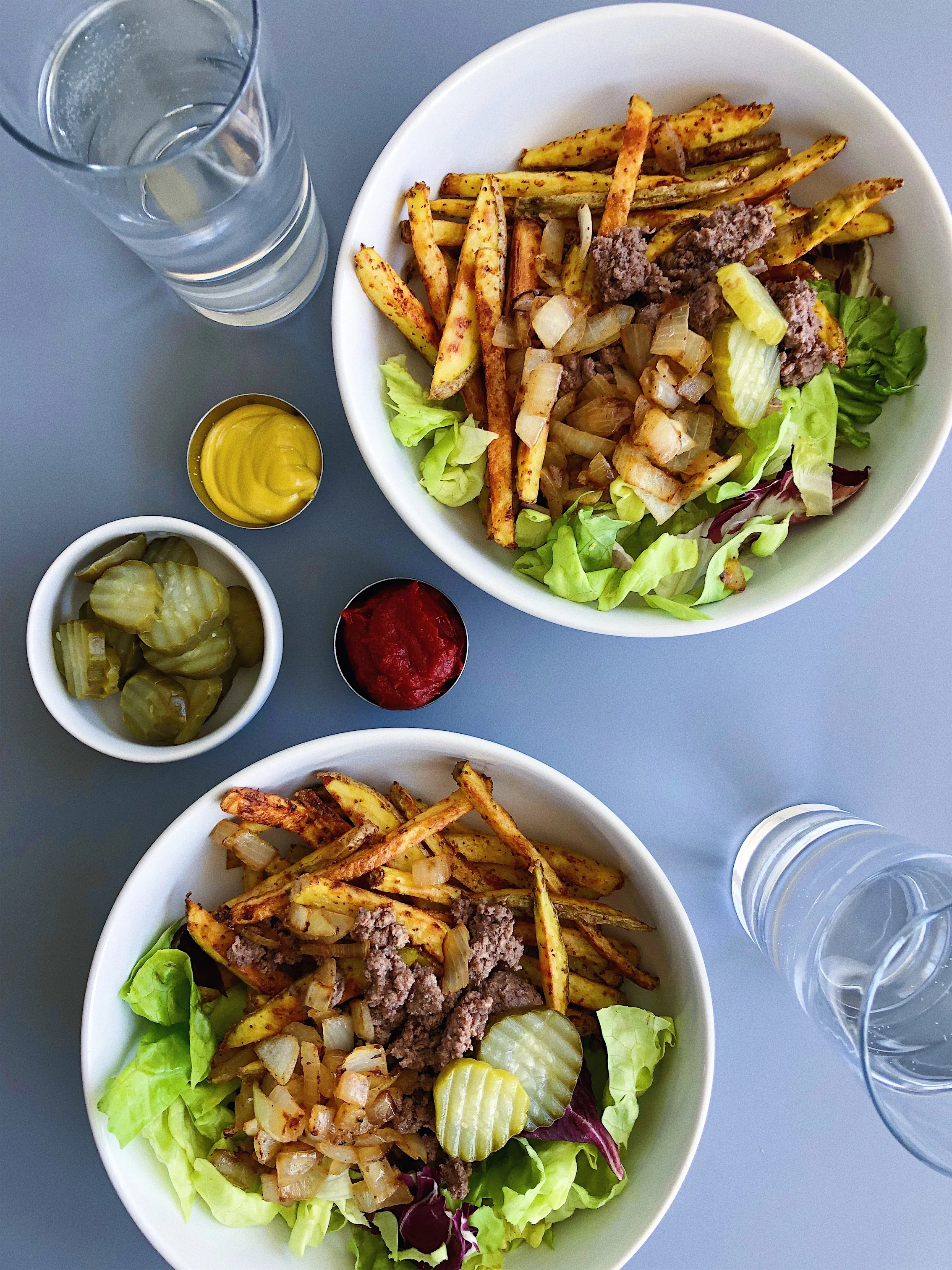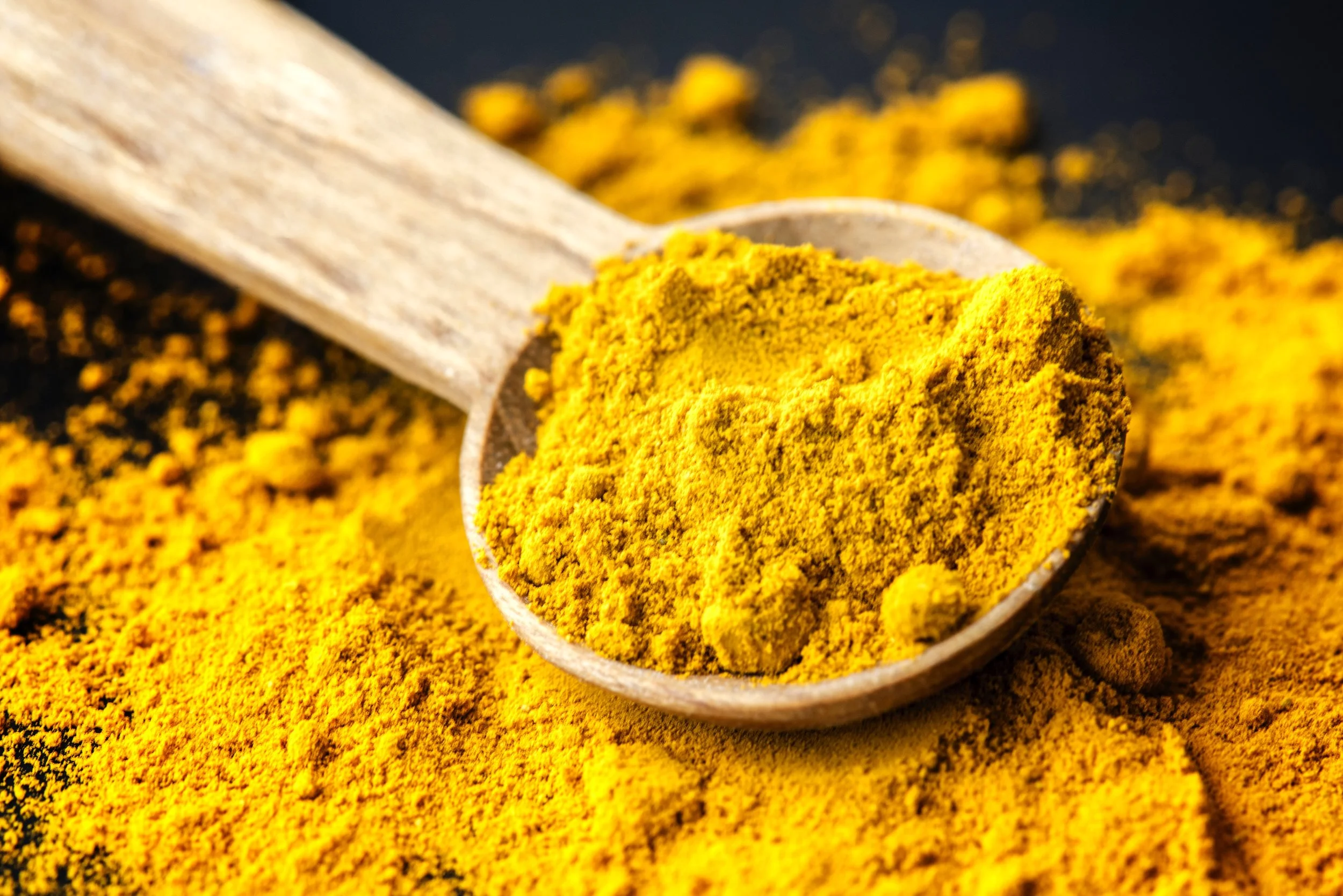I’ve never been a huge casserole person, but as life gets busier, the idea of mixing a bunch of stuff together, throwing it in a dish and baking it sounded more and more appealing. I’m not quite sure where this idea came from, but I just started experimenting with it and bam - this recipe was born.
It feels really rich without being heavy, but it is heavy in my favorite food group - veggies! By using the spaghetti squash instead of noodles, this dish keeps a low-carb status. It’s savory and satisfying and perfect as we head into the season of chilly nights and comfort food.
I used sage and thyme but you could also use rosemary or thyme or any other savory herb you have on hand.
Sage + Thyme Spaghetti Squash Bake
Serves 4 hungry people, 5-6 less hungry people
Cook time 1 hour / Total time 1 hour 30 minutes
Ingredients
1 large spaghetti squash
2 tbsp avocado oil
1 large onion, sliced
1 large bell pepper, sliced
2 garlic cloves, sliced
1 tsp sea salt, divided
1 pound of grass-fed beef
1 heaping tbsp fresh or dried thyme leaves
1 heaping tbsp fresh or dried sage
1 large head of broccoli, approximately 4 cups chopped
almond “parmesan” topping (optional)
½ cup almond flour
1 tbsp nutritional yeast
½ tsp garlic powder
Salt + pepper
Instructions
Preheat oven to 400. Slice spaghetti squash in half, remove seeds and place face down on a lightly greased baking sheet. Roast for about 45 minutes, until outside has started to brown and the squash has some give when you poke it.
While squash is roasting, heat avocado oil in a large skillet. Add the onion, bell pepper and ½ a tsp of salt to the pan. Saute on medium high heat until the onions and peppers start to get some color, about 10 minutes. Add the garlic and saute for another 2 minutes. Transfer to a large bowl.
In the same pan, add the ground beef and other ½ tsp of salt. Cook until the beef is no longer pink, about 7 minutes. Add the sage and thyme about halfway through cooking. Transfer the cooked beef to the same bowl as the onions and peppers.
Next, steam the broccoli. Chop broccoli into bite size florets and steam until tender but still bright green, about 10 minutes. Add the broccoli to the large bowl with the rest of the ingredients.
If you’re still waiting for the squash to finish cooking and are planning on making the Almond Parm, do that now. Add all ingredients to a small bowl, mix and set aside.
When squash is done, remove from oven and allow to cool for at least 10 minutes, flipping the squash onto the skin side to release steam. Increase oven temp to 425.
When squash is cool enough to handle, use a fork to scrape the inside. This should be easy and the squash should look like small noodles. Do this until the skin is as clean as you can get it, adding the squash noodles to the same large bowl as everything else.
Mix all ingredients together. Taste and add additional salt and pepper if desired.
Transfer ingredients to a 9x13 casserole dish or any baking dish that holds about 3 quarts. Sprinkle the top with Almond Parm if using.
Bake uncovered for 15 minutes. If using the Almond Parm, it will start to turn golden.
Remove from oven and enjoy!
notes
* Some of these steps can be done ahead of time (ie, roasting the squash or steaming the broccoli), which will help this come together more quickly.



